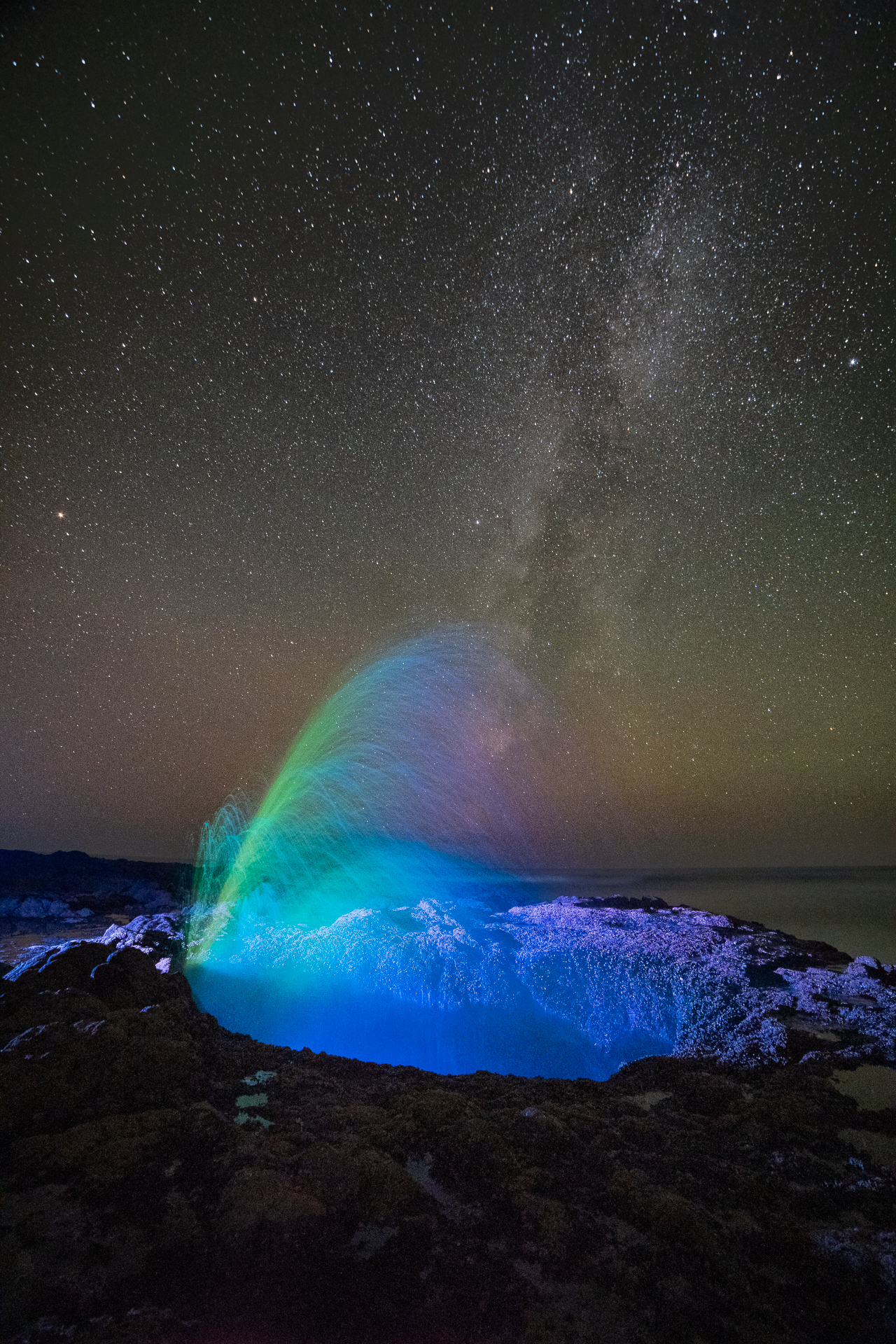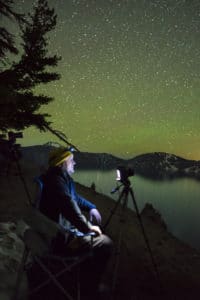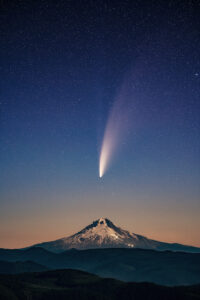
Shooting Thor’s Well and the Milky Way
My friends Aaron King, Brendon Porter, Drew Armstrong and I first visited Thor’s Well during a weeklong tour of the Oregon Coast in November 2017. I had met Brendon and Aaron through their PhotogAdventures.com podcast and YouTube channel that they had started a year before. Drew had met them through the podcast as well. While I had been to Thor’s Well and the Cape Perpetua area as a child, I’d never tried to photograph it before. We shot it then at sunset and sunrise, both time we left as the rising tides made it unsafe to stay.
We had seen Michael Shainblum’s amazing time-blended photo that he took after sunset with stars hanging in the sky above the Well. See: https://www.instagram.com/p/BE7RUPxCjtW/ (We actually had the great fortune to meet Michael a couple days earlier at Secret Beach. He’s a really great guy!) We had wanted to stay out long enough to catch stars, but the tide was coming in and getting too high so we got out of there. We came back in the morning hoping to get some stars, but we were too slow getting out of the hotel to make it down to Thor’s Well before the stars quickly disappeared into the rosy-fingered light of Eos (Dawn).
This June, Aaron, Brendon, and I returned to Cape Perpetua. We were still dreaming of shooting Thor’s Well with the night sky. The Milky Way is hidden behind the coastal headlands in June, so we had to be there later in the night. So we returned to the area at 1 AM as the Milky Way was still just behind the edge of the headlands. But the tide was just past high, hitting 9.5 feet just before we arrived. We did not want to be out at Thor’s Well in the middle of the night with a high tide.
Only a few hundred feet from Thor’s Well is a tide-driven water spout named “The Spouting Horn”. The Horn is inland from Thor’s Well and above the lava bench that the high tide washes over. Aaron had the awesome idea of using Low-Level Lighting Techniques to photograph the Spouting Horn instead. So we shot the Horn from across Cook’s Chasm at the bottom landing of the trail to the viewpoint for the Spouting Horn. This placed us higher above the sea and in a much safer location than it was at Thor’s Well. We ended up photographing the Spouting Horn until astronomical twilight began at around 3 AM. You can see my photo from that night here: link coming soon…
Thor’s Well Precautions
First a few cautionary words about being at Thor’s Well. When you are at Thor’s Well, you need to pay attention to the tides. The Well sits on a bench of basalt that extends away from the headland and into the sea. Waves will wash across the bench. The waves will try to wash you out to sea. There is no nice sandy beach there. There are some two or three foot high rock outcrops that people can stand on, but they only make it easier for the waves to knock you over. You will not want to be out there when the tides are getting high.
In addition to the tides, the ocean swells will have an affect on safety. If ocean swells are high, they can make even a low tide dangerous. And of course, there are sneaker waves that randomly cross the ocean and there is no way to predict when they will arrive. I hope you are getting the idea that being at Thor’s Well is a cake walk.
If this is not enough to make you think twice of going there when conditions are not ideal, stop by the Luna Sea Fish House in nearby Yachats, Oregon. Not only do I highly recommend having a meal there, there are a several photos posted on the wall of their building showing a couple photographers being swallowed by an incoming wave. This wave appears to be several feet over the heads of the photographer, and picks them up and engulfing them. It can be a very dangerous place.
Shooting Thor’s Rainbow
Aaron, Brendon, and I returned last month, again with the idea of getting a Milky Way with Thor’s Well. We were there with several followers of Aaron and Brendon’s podcast for their 2018 Photog Adventures Listener Adventure.
This night, the tides were on our side and the swells were low, only about a meter high. Low tide occurred just after 6PM – it was predicted to be at a really nice low of -0.8 feet. We arrived at 7:00 PM and shot until 9:30 PM as the tide was coming in but still not coming over the bench.
We got down there after sunset and photographed for a while during blue hour, looking for compositions that would work with the Milky Way. We used PhotoPills and PlanIt for Photographers to determine where the Milky Way was going to be before we could see it. Before it was totally dark, Brendon and I tied 5 blue glow sticks with a length of 30 test-lb fishing line. We left a long lead on the line and then tossed the glow sticks into the Well. I looped the line around a nearby rock and tied end of the line to my belt so we’d be able to retrieve the glow sticks.
I had hoped that five glow sticks would be bright enough to illuminate the water inside Thor’s Well. They did add some light, but it was not as bright as I had expected.
Luxli Viola and Low-Level Lighting (LLL)
After shooting compositions with the Milky Way for a while with the glow sticks in the well, I got out a Luxli Viola 5″ Multi-Color On-Camera LED Light that I had just bought. (That link is an Amazon Affiliate link that ties to Photog Adventures and helps them produce their shows.)
The Luxli Viola is a 5″ LED panel that is designed to mount on top of your camera using a hot shoe adaptor. The Viola has a variable 3000-10,000K Color Temperature, can easily be dimmed from 100% down to 0% in 1% brightness steps. Power is supplied via a standard Sony NP-F battery or DC via an AC adaptor. Combined with the Luxli Conductor Bluetooth app, you can control all the settings from your phone. And best of all, it provides fully adjustable color light – you can make any color of the rainbow with it!
The Luxli Conductor app has special effects functions – we used one for this photo. With the Luxli Viola set to the “Rainbow” function, it can cycle the Viola through all the colors of the rainbow. I narrowed the range to cycle from green through blue and violet around to red, leaving out orange and yellow. The speed that it progress through the colors is adjustable as well. Since the waves only splash up for about 2 seconds or so, I set the “Speed” to about 90% of the maximum rate on a continuous loop.
I’d forgotten to bring down a light stand for the Viola, so we set it on the rock bench that photographers typically stand on when shooting the Well. It’s to the east of the Well, and since we wanted to shoot to the southwest to get the Milky Way behind the Well, the Viola was well placed to model the waves and the rocks around the Well. We tipped it upwards so the light falloff from the Viola illuminated the rock foreground less than the waves.
Then it was just a matter of waiting for the right wave, one that splashed enough water and not too much! Occasionally, the water would toss the glow sticks up so they were visible. You can see them in some of the photos as streaks in the glowing blue water. We tried several variations that night, setting the Viola to red, which looked really cool with the blue from the glow sticks. We also tried using a headlamp set to red or blue for some coss lighting of the foreground rocks. We got so many cool photos that night. And the Milky Way is in every shot as well!
I’m really happy with the Luxli Viola. And the photos we got this night exceeded all our expectations! I think this is a light that every nightscape photographer should think about getting.


